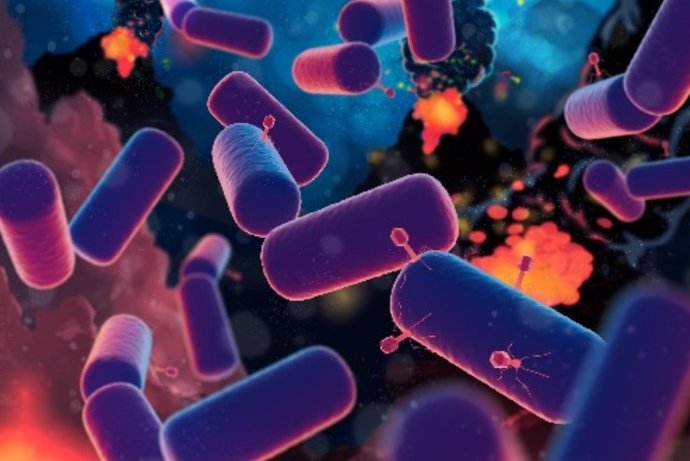A digital representation illustrating how LUCA was already under attack by viruses even 4.2 billion years ago. – SCIENCE GRAPHIC DESIGN
12 Jul. () –
Hundreds of millions of years after the planet formed, life on Earth was already flourishing, according to a study of the oldest ecosystem on our planet.
LUCA (Last Universal Common Ancestor) is the supposed common ancestor from which all modern cellular life descends, from single-celled organisms such as bacteria to giant redwood trees, as well as us humans. LUCA represents the root of the tree of life before it split into the groups we recognize today, Bacteria, Archaea and Eukarya.
Modern life evolved from LUCA from several different sources: the same amino acids used to build proteins in all cellular organisms, the shared energy currency (ATP), the presence of cellular machinery such as the ribosome and others associated with making proteins from information stored in DNA, and even the fact that all cellular life uses DNA itself as a way to store information.
An international team led by the University of Bristol compared all the genes in the genomes of living speciescounting the mutations that have occurred in their sequences over time since they shared an ancestor in LUCA. They publish results in Nature Ecology & Evolution.
LUCA EXISTED 4.2 BILLION YEARS AGO
The timing of the split of some species is known from the fossil record, so the team used a genetic equivalent of the familiar equation used to calculate velocity in physics to determine when LUCA existed, arriving at the answer of 4.2 billion years agoabout four hundred million years after the formation of the Earth and our solar system.
Co-author Dr Sandra Alvarez-Carretero, from Bristol’s School of Earth Sciences, said it’s a statement“We did not expect LUCA to be so old, only hundreds of millions of years since Earth’s formation. However, our results fit with modern views on the habitability of the early Earth.”
The team then elaborated on the biology of LUCA by modelling the physiological features of living species across the genealogy of life back to LUCA. Lead author Dr Edmund Moody explained: “The evolutionary history of genes is complicated by their exchange between lineages. “We have to use complex evolutionary models to reconcile the evolutionary history of genes with the genealogy of species,” said co-author Dr Tom Williams from Bristol’s School of Biological Sciences: “One of the real advantages here is applying the approach of reconciling gene trees and species trees to such a diverse dataset representing the primary domains of life – Archaea and Bacteria. This allows us to say with some confidence and evaluate that level of confidence about how LUCA lived.”
Co-author Professor Davide Pisani said: “Our study showed that LUCA was a complex organism, not unlike modern prokaryotes, but what is really interesting is that it is clear that it possessed an early immune system, showing that Even 4.2 billion years ago, our ancestors were engaged in an arms race with viruses.”
Co-author Tim Lenton (University of Exeter, School of Geography) said: “It’s clear that LUCA was exploiting and changing its environment, but it is unlikely to have lived alone. Its waste would have provided food for other microbes, such as methanogens, which would have helped create a recycling ecosystem.”












Add Comment